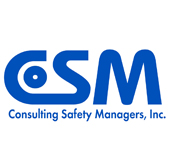How to Get Ahead of a High Injury Rate
You despise a high injury rate in your operations. It’s embarrassing and no fun to explain. Your team just cannot seem to get ahead of it’s high injury rate. It’s stuck.
The Wrong Way
Not only are injuries bad for injured employees and their families, but a high injury rate is costly. A high frequency of injuries can significantly increase overhead, giving your competition an advantage. Every injury wastes time and compounds frustration, distracting people from the core business at hand.
Heed this fact too. A high injury rate is the mark of supervisors and managers who lack well-rounded skill sets. We see time and again managers attempting to solve a high injury rate without applying proven methods and a solid plan. Not a good thing if you are trying to get ahead.
Managers often respond by taking a defensive position against a high injury rate. They build a homemade safety program and invoke a makeshift safety culture. Here are some telltale signs:
- Copying other companies’ safety practices into a safety manual.
- Blaming people rather than get serious about the hierarchy of controls.
- Piling burdensome safety rules onto employees that don’t change behaviors.
- Launching low-impact awareness campaigns.
- Implementing a narrow bundle of safety activities.
- Pursuing minimum safety compliance instead of a path to safety excellence.
And let’s not forget the endless conference calls and meetings. Bottomless injury databases. Pouring over safety metric spreadsheets that employees could care less about. Discussing broken this. And let’s try that. The effort never seems to have a compelling impact to get ahead of a high injury rate.
The result: employee protection as ineffective as the Three Little Pigs’ houses of hay and sticks. The protection does not stand up to the underlying risk. The first two Little Pigs had good intentions. However, when a manager pursues a course of action without strategically thinking about safety management, expect mediocre results. See you in the hot seat again next year.
A Different Approach
Now imagine this about your operations: your employees work safely and avoid the injuries. That’s right. Your team can get ahead of injuries. Imagine a systematic approach for protecting your people. People engaged in their safety. Sound risk assessment and risk reduction. Clear accountabilities. Safety processes that really work. Supervisors who take charge of safety. A safety culture that means something.
Instead of being embarrassed by your high injury rate – imagine your team taking pride for being recognized for strong safety performance. Imagine your team regaining valuable time and shedding a mountain of hassles. This outcome can become a reality by building a safety management system of bricks and mortar. Not possible you say. Well, it is. Our SafeTask® System users do it every month.
You can get ahead of a high injury rate. Here is the proven approach that our SafeTask® System users apply:
- Focus on safe behaviors for a high percentage of work tasks.
- Transform supervisors into vigilant safety managers.
- Reinforce a safe norm every shift.
- Implement the right combination of proven safety methods.
- Foster good judgment about risk in your people.
If your team wants to go offensive against injuries and the causes behind them, then this approach works. Backed by the success of our SafeTask® System users, this approach can move you towards better safety performance.


